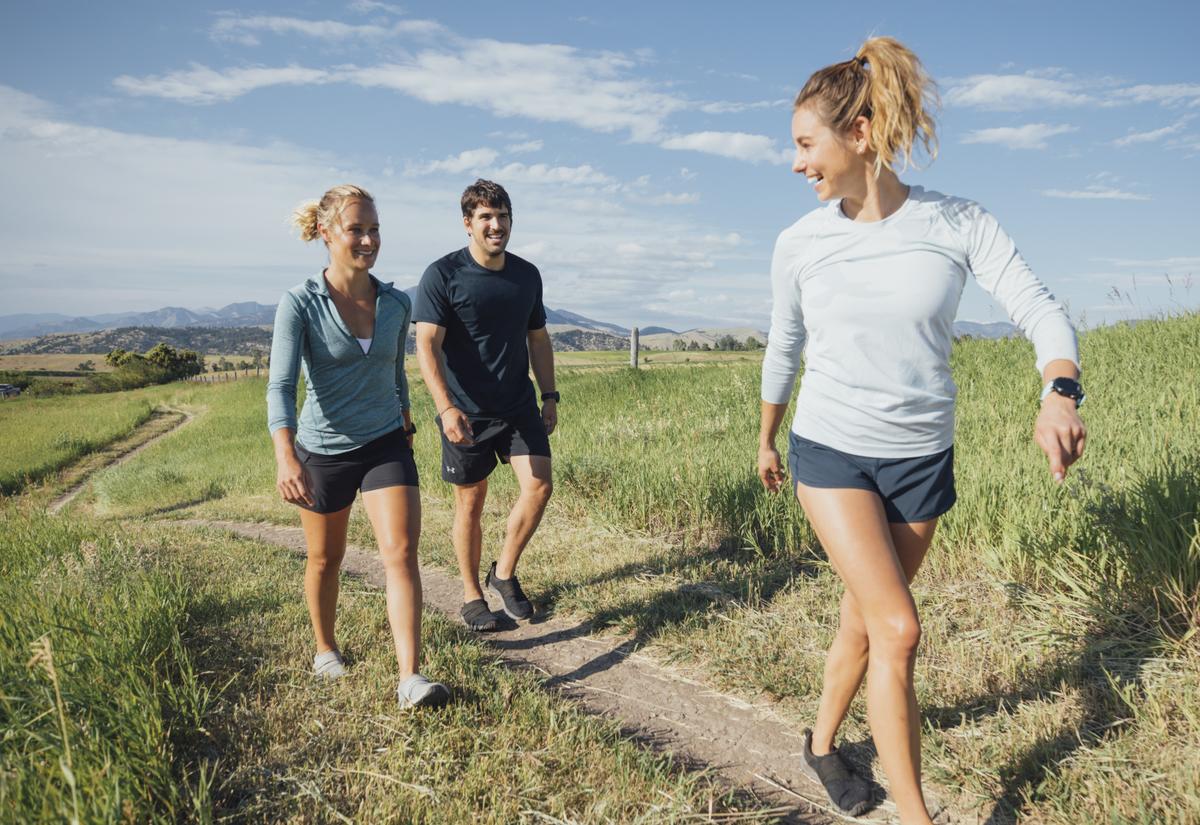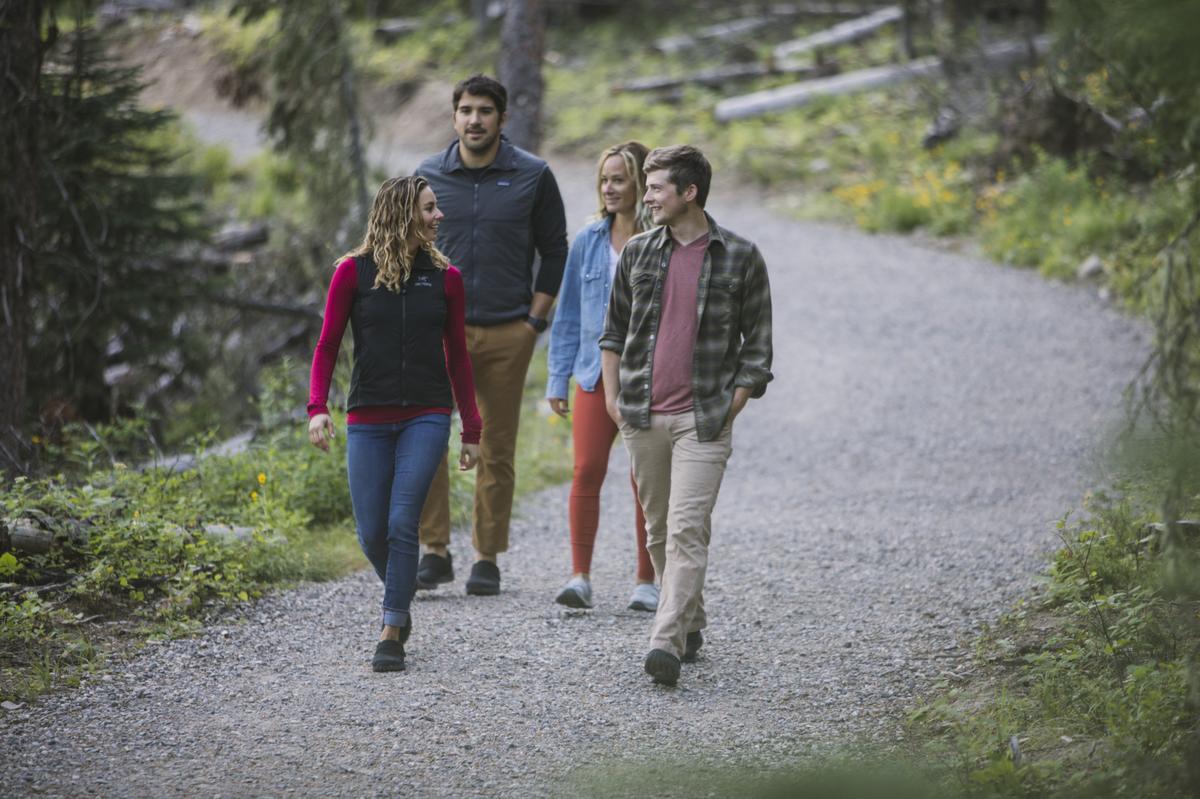
If you visit the Rift Valley of Kenya and spend some time among the world’s greatest distance runners, you’ll quickly notice that everywhere you look everyone is walking. They also run, of course, long miles on red dirt roads and mind-blowing speed sessions on the track. But walking is how they get around. They walk to school, to work, to town to get groceries, to the neighbor’s house. And when not walking to get somewhere, kids kick a soccer ball around, adults work in fields, friends stand together talking. They are always active.
Rural Kenyan lives are a continual exercise in active recovery. They don’t have to plan and schedule it. In contrast, those of us who live in modern, sedentary cultures have to make it a priority to create activity that will enhance and speed recovery. Here are a few thingsto keep in mind when working active recovery into your schedule.
- Activity is Normal
“We were meant to be field animals,” wrote renowned cardiologist Paul Dudley White. “To rise with the sun, to be out in the open air, to be always active…” We’ve come a long way from the lifestyles of our ancestors, but our bodies are still programmed to require near-constant activity. In a culture where we have to spend hours sitting while accumulating emotional stress, doing something active is essential for physical and psychological health. “For many busy people, running is the recoveryof a stressful life,” says Mark Cucuzzella, M.D., marathoner and author of Run for Your Life.
We need to move and sweat every day because we are human. Ann Ringlein of the Lincoln Running Company, who currently conducts classes for nearly 500 runners a year from beginners to marathoners, finds that many runners feel worse when they take a day or more entirely off. “Our lives are pretty easy, we need a little discomfort in it,” she says.
Accepting that activity is normal gives us perspective. Doing something active is not adding a workout to your schedule but the baseline requirement of living. Only our sedentary culture makes it feel that we need a complete rest from activity to make up for harder efforts. You can make your recovery days more rejuvenating with Topo recovery shoes that are specially designed to help restore your fatigued body between workouts.

- Specificity Matters
Since we live in such a culture, and given the limited time most of us have to devote to exercise, many coaches recommend that active recovery should be more running, to work the specific muscles and patterns you’re training for.
“My philosophy is to make recovery as close to running as possible unless you’re feeling fatigued from the total amount of work or an injury,” says Jeff Gaudette, founder and CEO of Runner’s Connect, an online education and coaching service. “I find this to be more specific and help runners increase the total amount they are running—as opposed to a greater percentage of running being harder efforts.”
That caveat, however, is important: “unless you’re feeling fatigued.” Specificity matters in terms of recovery too. If running at whatever pace stresses already over-fatigued muscles and tendons, you’ll end up going backward rather than forward. But that doesn’t mean you can’t still be active. Doing something different—be it walking, hiking, biking, swimming, canoeing, or even weight training other muscles—can create all the benefits of clearing waste and rebuilding new and stronger muscles, tendons and cardio-vascular systems, without tearing down damaged tissues.
If you’ve got the time, and the strength, the choice need not be “or” but “and.” This is the Kenyan model; they run as much or more than their northern counterparts, then also walk and work actively the rest of the day.

- Alternatives Are Attractive
Kenyans can do this, however, because it is normal for them, they’ve been active since youth. Many new runners, building their strength and endurance, will feel excessive fatigue and may well need days off of running. Older runners, whose recovery powers are changing, also need to be careful to spread the stress, says Greg McMillan, online coach and author of You (Only Faster).
Doing something besides running may be new for those who have long been used to accruing daily miles, or counterintuitive to the motivated beginner. In his training plans, McMillan builds in recovery days where athletes have a choice of taking a day off, cross-training or doing an easy run. “Then, I harp on how this day empowers them to really listen to their body,” McMillan says. “I let them know that any option is a good option.”
Podiatrist and runner Paul Langer has experienced a shift in his own recovery strategy. “As I’ve gotten older, I have found that active recovery runs simply are counter productive for me,” Langer says. “Cycling is my go-to recovery now. Personally I think biking is a perfect active recovery activity since the impact is minimal, you can coast or ride the flats if you’re really dragging and developing quad strength helps balance out the hamstring development of running.”
When more running miles aren’t appropriate, you need to find your own perfect active recovery activity that revs your circulation without pounding your muscles and connective tissue. Or, better yet, find a handful of activities that you can pull out of your bag whenever one feels right.

- Adaptation Is What Matters
“But how do I count it?” you ask. Runners obsess over miles. They’re a comfortable and easy way to measure our effort. We know what 40 miles a week means in terms of seriousness, fatigue and fitness. Not being able to record more running miles is one reason we resist going for a hike or a bike ride, as silly as that may sound.
It would be nice to say there are simple conversion formulas, and coaches sometimes create them. Ringlein, for example, has allowed compulsive runners to count three miles biking as equal to one running. But, truth be told, different activities aren’t equivalent. You can’t convert them to a common denominator and add them up to one total.
“I don’t mind putting in the minutes and any notes but when folks try to equate their cross-training with running miles, I just don’t think it works,” says McMillan. Gaudette agrees. “Our solution was to create a separate category in the log that totaled time spent doing cross training activities,” he says. “This way you have a record of total work done and can measure changes and corresponding changes in performance, fatigue, etc.”
Active recovery time may not be equivalent to running more, but that doesn’t make it any less essential. The goal of training is to get stronger and faster, to adapt our bodies. If training is the force that starts the adaptation process moving, active recovery is the lubricant that lets it move quicker, the catalyst that speeds the reaction. It doesn’t replace running, it enhances the effect of running.
Not being able to log active recovery has a benefit: We can enjoy it at face value, as a natural part of each day. It’s no longer something to get done so we can check it off and add it up.
Rather than blocking out time and changing into workout clothes to hike, bike, skateboard or do yoga, let these activities happen spontaneously and easily. Rather than fatiguing you, you’ll likely find they make you feel fresh, mobile, alive—and primed to run harder and longer during your next workout.
__________________________
The Whole Athlete is a monthly running series written by Jonathan Beverly and brought to you by Topo Athletic. We aim to deliver advice that serves the whole athlete, from training and recovery to nutrition and psychology.
 Jonathan Beverly is author of Your Best Stride and Run Strong, Stay Hungry. A lifetime runner, his passion is to help others experience the joy of training, competing and being fit and fully alive.
Jonathan Beverly is author of Your Best Stride and Run Strong, Stay Hungry. A lifetime runner, his passion is to help others experience the joy of training, competing and being fit and fully alive.
He served as editor of Running Times from 2000-2015 and has coached runners of all ages and disciplines.